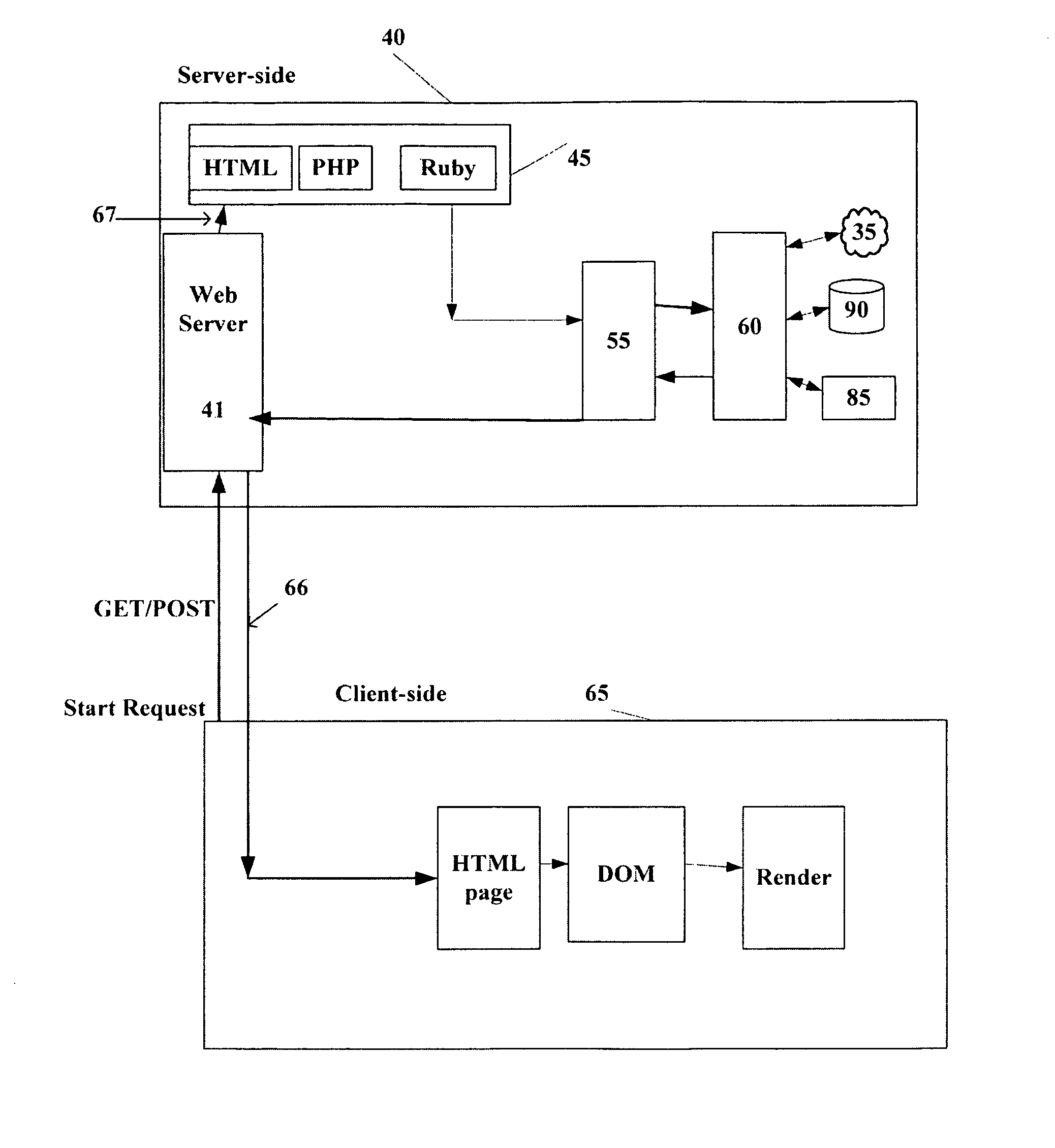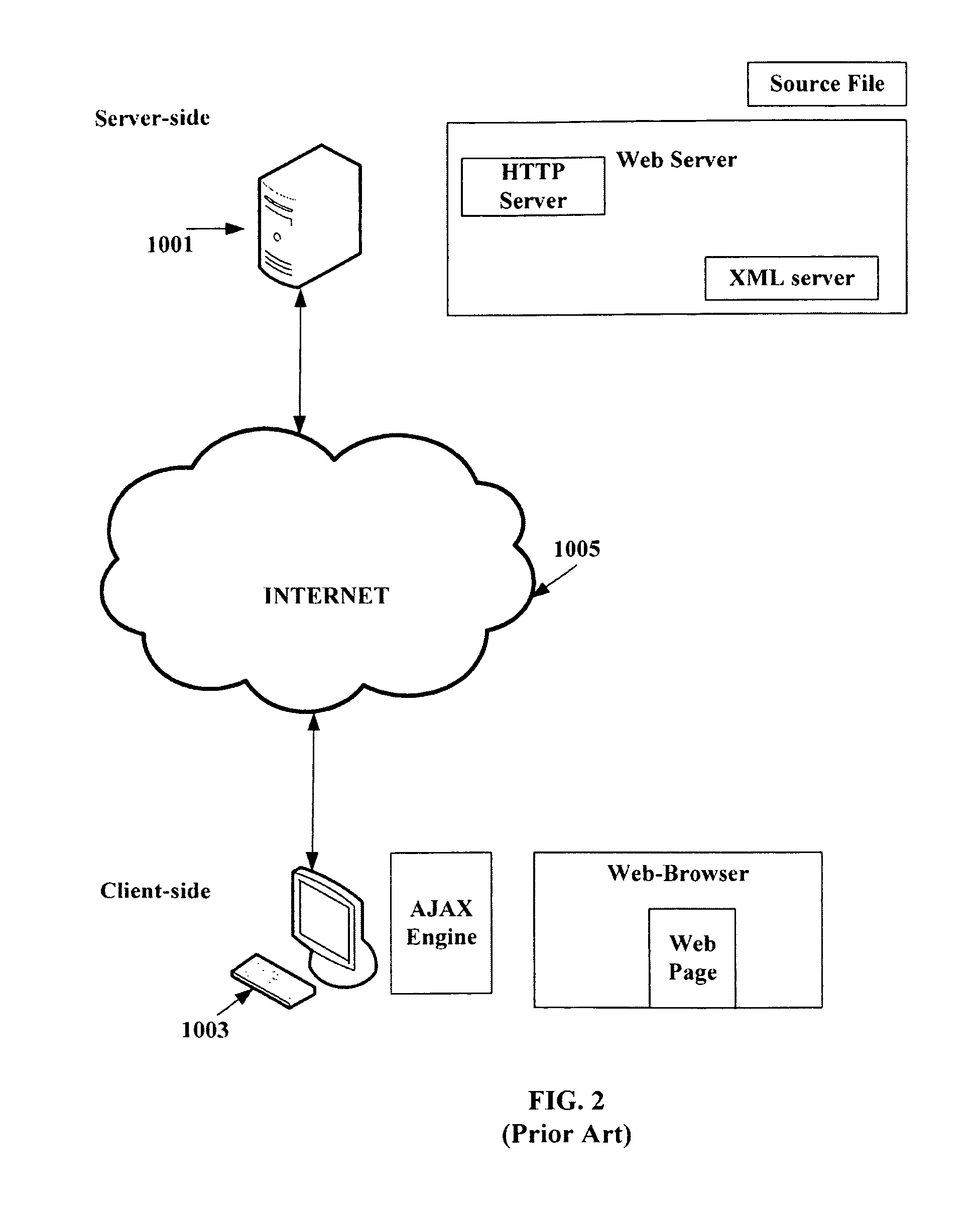System and method for secure binding of client calls and server functions
a client call and server function technology, applied in interprogram communication, multi-programming arrangements, instruments, etc., can solve problems such as security and compliance issues, wasting bandwidth, and current server-side javascript technology not offering complete interactions
- Summary
- Abstract
- Description
- Claims
- Application Information
AI Technical Summary
Benefits of technology
Problems solved by technology
Method used
Image
Examples
example
[0131]The following example illustrates one simple way of using the proxy options in a typical code scenario. Group all the server-side code in one script block, and explicitly designate a subset of function to be proxied. Then all client-side code goes in a different script block (where there isn't even the option of programmatically changing it by setting a different runat or proxy value). Of course those skilled in the pertinent art may choose different ways of organizing the code. Further, for large amounts of code, one has the option to extract the code into (reusable) external JavaScript files.
[0132]The _login.js file referenced in the example illustrated in the code below which contains some functions that explicitly override the runat=‘server’ directive specified on the script tag used to load the file.
[0133]
function setPassword(username, newPassword){ / / put code in here to directly set the password of a given username / / this code should not be callable from the client}fun...
PUM
 Login to View More
Login to View More Abstract
Description
Claims
Application Information
 Login to View More
Login to View More - R&D
- Intellectual Property
- Life Sciences
- Materials
- Tech Scout
- Unparalleled Data Quality
- Higher Quality Content
- 60% Fewer Hallucinations
Browse by: Latest US Patents, China's latest patents, Technical Efficacy Thesaurus, Application Domain, Technology Topic, Popular Technical Reports.
© 2025 PatSnap. All rights reserved.Legal|Privacy policy|Modern Slavery Act Transparency Statement|Sitemap|About US| Contact US: help@patsnap.com



